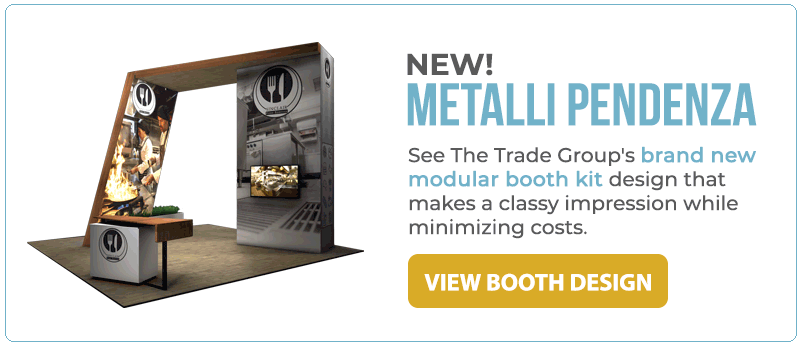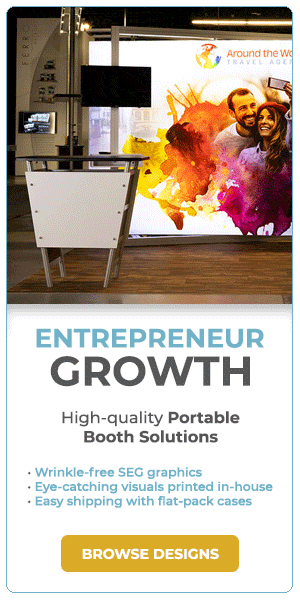
A few months ago, my wife and I attended our first concert since the pandemic. In the glory years before Covid, we were stingy with our cash and usually opted not to buy merch from the band. If we did get something, it was a small knickknack like a bracelet or pin.
Now it’s different.
We’ve attended several events (not just concerts) and it feels like a risk not to get something because you never know when the next earth-shattering disaster is about to happen.
In other words, we live a little looser with our cash. If we want to go do something, we make the time and go do it. We value time doing things together more than ever and, as a result, we’re more interested in investing in things related to our experiences.
But our story is not unique.
Experiential marketing is poised for massive growth
Experiential marketing was thriving before the pandemic; it remained active during the pandemic and is now poised for massive growth.
Experiential marketing is used by businesses to increase customer loyalty, inform people of products and services and meet the changing priorities of consumers. Let’s look at experiential marketing before, during, and after the pandemic to get an idea of where this tactic is headed and how you can take advantage of these trends.
According to an Eventbrite survey from 2018:
- 78% of millennials would rather spend money on experiences vs. tangible things
- 69% highlighted FOMO (fear of missing out) as a key factor driving them to show up for live events, share experiences and engage with others.
McKinsey & Company found that over the past few years, experience-related spending grew 1.5 times faster than overall personal-consumption spending and nearly 4 times faster than expenditures on goods.
In other words, before the pandemic, experiential marketing was BOOMING. Of course, the pandemic had a massive impact on the industry. But maybe not as much as you might think.
Despite the interference in daily life, YouGov reported in 2020 that:
- 31% of Americans still managed to attend product demos
- 20% visited pop-up shops
- 17% dropped by brand installations
All of this points to the fact that, for many people, being couped up indoors is next to impossible. The industry’s current projected 5-year growth is expected to exceed 15 billion dollars.
So, how is the industry performing today?
At the time of this writing, Bitcoin 2022 is taking place in Miami, FL. It’s the world’s largest cryptocurrency event in history, amassing over 25,000 attendees. KBIS and IBS are two shows that teamed up in February of this year to put on one of the largest in-person trade shows since the pandemic.
Trade shows are making a comeback and part of the reason is they are including more experiential elements like increased space for demos, DJs, photo booths and celebrity appearances.
The most recent surveys conducted by Event Marketer and Finance Online in 2021 conclude:
- 85% of consumers are likely to buy after participating in events and experiences
- 70% of consumers become repeat customers after an experiential marketing event
- 65% of consumers say that product demos and live events helped them understand the product better than any other advertising method.
Taking these consumer preferences into account, it’s no wonder why the industry is only expected to grow.

The most POWERFUL immersive experiences you should consider for your business.
It’s possible you might be asking just what exactly experiential marketing is. At the foundational level, experiential marketing appeals to all of a person’s senses such as sight, sound, smell, taste and touch by involving them in different activities. Key to experiential marketing is that consumers play and active role, not a passive one.
Some of the most popular experiential activities include:
- Try before you buy
- Augmented reality
- Virtual reality
- Live events (concerts, lunch & learns, art installations, seminars, trade shows etc.)
Try before you buy campaigns are not new. The reason this tactic has been around for so long is because it is great for building trust and demonstrating value to your customers. For example, auto dealers have been offering overnight and weekend demos of cars for decades.
Augmented reality is where the real world and digital elements overlap, thanks to smartphone cameras and apps. For example, the beauty giant, Estee Lauder, partnered with YouCam Makeup to offer UK customers the opportunity to virtually try on 30 shades of lipstick at Selfrides retail locations.
Virtual reality differs from augmented reality in that the person is immersed in a simulated environment. The hiking boot company, Merrel tapped FrameStore VR studio to create a multi-sensory experience to coincide with the launch of its high-tech Capra hiking show. Along with the agency Hill Holiday, FrameStore created an extreme, motion-tracked virtual hike that would appeal to Merrel’s “thrill seeking, outdoor-loving audience.” Read the incredible results here.
Live events allow for direct interaction with your target audience, which is what makes live events the cornerstone of all experiential marketing efforts. In 2017, video game developer Blizzard Entertainment wanted to do something special to thank its loyal World of Warcraft fans at its annual gaming convention, Blizzcon. Blizzard also wanted to raise awareness for the newest addition to the World of Warcraft franchise, Battle for Azeroth. Read our case study here.
Prepare to experience an onslaught of marketing events—get in the game before it’s too late with 7 easy steps.
There are seven quick and easy steps for getting started with your own experiential marketing program. The first one is to download our whitepaper, Boost Your Brand with Immersive Experience. The other six steps are contained within that document along with 5 case studies.
The Trade Group is a full-service trade show and event marketing company. We will work with you to create an exhibit or an event that brings in leads and helps you achieve your business goals. Contact us here or give us a call at (800) 343-2005.




